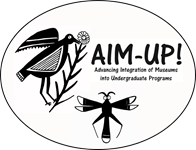Responses to Climate Change in California Chipmunks: Move, Adapt, or Die
Author(s): Talisin Hammond1, Rachel E. Walsh2, Eileen Lacey3
1. San Diego Zoo Institute for Conservation Research 2. University of California, Berkeley 3. Museum of Vertebrate Zoology, UC Berkeley
1369 total view(s), 787 download(s)
AIMUP_CLIMATECHANGE_MODULE.doc(DOC | 25 MB)
alpinus_pia.png(PNG | 2 MB)
climate-change-files.zip(ZIP | 37 MB)
speciosus1.jpg(JPG | 9 MB)
- Climate change, collections and the classroom: using big data to tackle big problems | Evolution: Education and Outreach | Full Text
- http://aimup.unm.edu/for-educators/Climate%20change.html
- License terms
Description
Overview
By collecting specimens over a broad range of time from single populations, scientists can use museum specimens to study change over time, whether evolutionary or ecological. For example, museum data can be used to explore how wild animals are responding to climate change. This multi-part module uses the "move, adapt, or die" framework to explore how small mammal species in Yosemite National Park, CA are responding to climate change with range shifts, morphological changes, genetic changes. Using Grinnell Resurvey Project specimens, this multi-part module focuses on chipmunk species and will teach students tools for online database use, data visualization and analysis in R, and ecological niche modeling with MaxEnt. Detailed instructions for using these tools is included and should make their application relatively straightforward. Students will test hypotheses using these programs and answer thought questions on the included worksheet.
The main instruction document can be found in the materials associated with this resource, entitled: "AIMUP_CLIMATECHANGE_MODULE"
More background information can be found in the following open access publication associated with this work:
Lacey, E.A., Hammond, T.T., Walsh, R.E., Bell, K.C., Edwards, S.V., Ellwood, E.R., Guralnick, R., Ickert-Bond, S.M., Mast, A.R., McCormack, J.E. and Monfils, A.K., 2017. Climate change, collections and the classroom: using big data to tackle big problems. Evolution: Education and Outreach, 10(1), pp.1-13. https://doi.org/10.1186/s12052-017-0065-3
Logistics
Part I and III of this module are designed to function as independent, 60-90 minute activities, though they do complement each other and work well together. Parts IIA and IIB build on the concepts in Part I and are shorter sections. Our intent is for students to complete Part I and then choose whether to continue with Part II, Part III, or both. Note that all included data files should be downloaded and stored in a folder on the Desktop.
We advise that, if possible, you use campus computers with all software and data files pre-loaded and tested. Students can work in pairs or alone. If no shared campus computers are available, students may use their own laptops. We have attempted to address all potential software problems in the instructions by providing detailed instruction for software downloading and installation. We suggest that students read the “Background Reading” sections before class. For Parts I-III, we also suggest that students go through the Rbasics.R file before class.
Resource Authorship and Development
This project was developed as a part of the Advancing Integration of Museums into Undergraduate Programs (AIM-UP!), which was funded by the National Science Foundation Research Coordination Network program. The module was designed by Talisin T. Hammond, Rachel E. Walsh, Eileen A. Lacey with collaboration and input from others. The original educational module can be found here: http://aimup.unm.edu/for-educators/Climate%20change.html
Cite this work
Researchers should cite this work as follows:
- Hammond, T., Walsh, R. E., Lacey, E. (2020). Responses to Climate Change in California Chipmunks: Move, Adapt, or Die. AIM-UP, QUBES Educational Resources. doi:10.25334/BEY3-QH48
